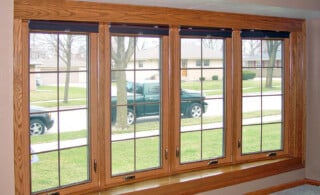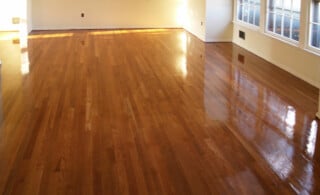
A heating and cooling system can only do so much work to maintain a constant temperature in your home. Therefore, to keep your indoor climate stable, it is essential that you properly insulate the walls, rafters, and other empty gaps in your home’s structure. Otherwise, if these areas are not properly sealed, warm air could end up escaping your home, which will force your HVAC system to work on overdrive to make up for the heat loss. Therefore, fiberglass insulation is commonly installed into these interior spaces since it’s so affordable and easy to work with.
Selection Process
When shopping for fiberglass insulation, there are two things you want to consider:
R-Value: This number indicates the product’s resistance to heat flow. The higher the R-value, the greater the thermal resistance. This means that the product will be denser, thicker, and contain more air pockets. However, it also means that it may be more expensive, so make sure to consult a professional to determine what R-value you’ll need.
Intended Area: Where is it being installed? An attic is much more accessible because it is so exposed, but this also means more insulation with a higher R-value will be required. If it is being placed in a pre-existing wall, it may be harder to install additional padding because it will require extra demo and reconstruction, but since it is already sealed the R-value won’t have to as high. Make sure to measure the square footage of the area you intend to insulate so that you can purchase the proper amount with the appropriate R-value.
Stay Safe
This material is simple to install since it’s easy to cut and comes in batts that simply roll out over the space. However, this material can also be dangerous if improperly handled, so leave it to the pros if you have any doubts. The product is made out of tiny fibers that can irritate the body so make sure you always wear gloves, long-sleeve shirts, a cap, and pants to avoid direct contact with skin. Also, wear a mask and goggles so fiber dust won’t enter your system. You’ll probably be spending most of the day on your knees as well, so to stay comfortable it may be a good idea to wear knee pads. And if you’re working in an attic, make sure to watch your step for unsupported areas between the rafters.
Keep It Fluffy
Never force fiberglass insulation into an area that is too small. If it becomes too compressed, the R-value decreases because the air pockets collapse. So if it is too thick, invest in a different size. Also, when insulating walls, make sure you always have a vapor barrier. This plastic sheet is placed between the padding and the interior wall so as to prevent moisture from penetrating the fibers. If the padding becomes wet, it may become compacted which will also lower the R-value. Remember: When adding to pre-existing insulation in walls or attics, don’t lay the new product on top of the vapor barrier. Temporary remove the barrier as you install, and then afterwards immediately replace it again between the new padding and the inside of the house.
 Roof Insulation Captures Escaping Energy
Roof Insulation Captures Escaping Energy  Want Energy Savings? Install Reflective Insulation!
Want Energy Savings? Install Reflective Insulation!  Making Your Home Energy Efficient
Making Your Home Energy Efficient  Low-e Windows – Are They Worth the Investment?
Low-e Windows – Are They Worth the Investment?  Insulating a Wood Floor
Insulating a Wood Floor 

Are You Familiar With This Topic? Share Your Experience.